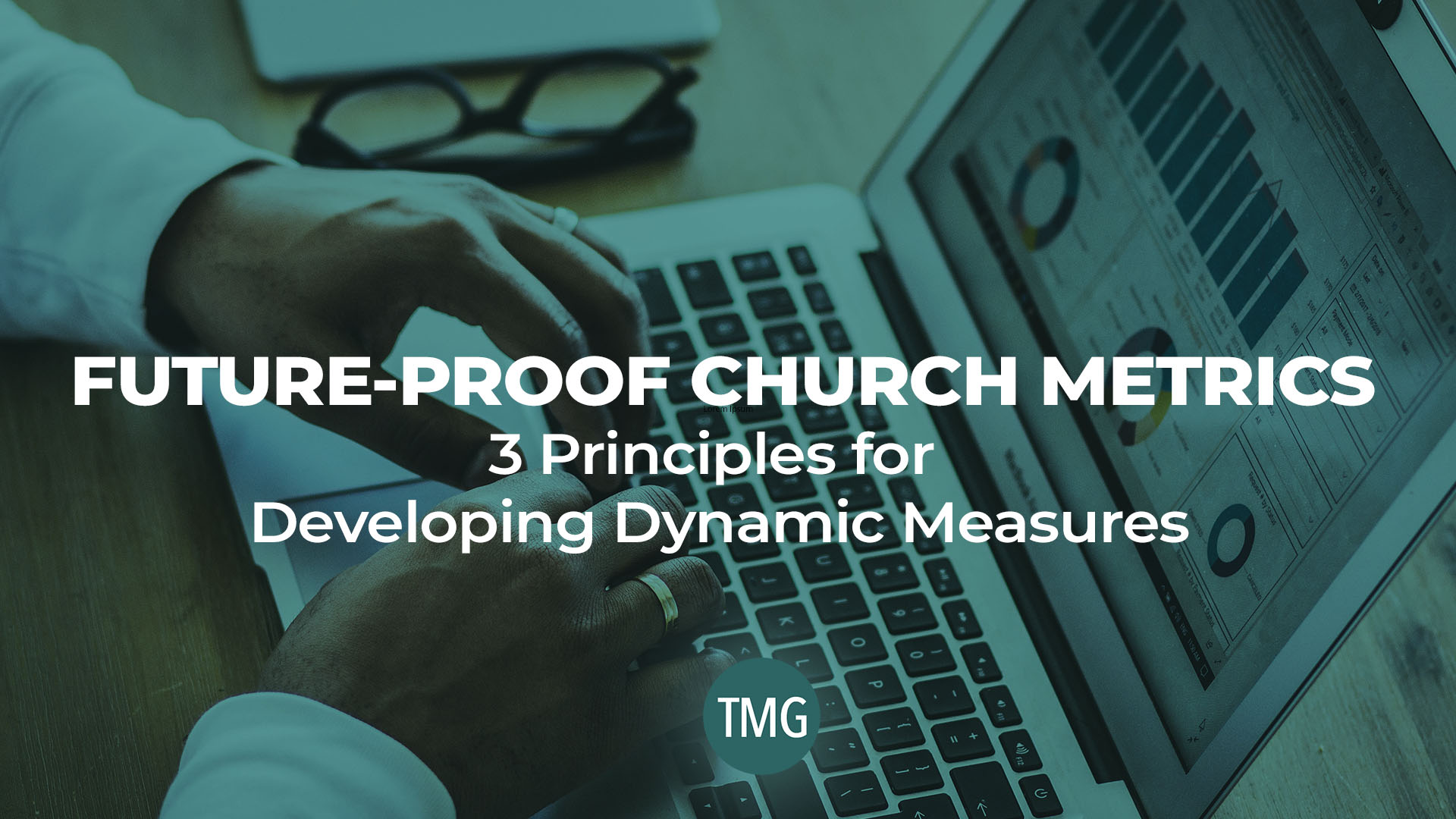Church Revitalization Podcast – Episode 63
Our Guide team here at TMG has noticed a recurrence in the conversations we have with pastors over the last several months. In the first few minutes of nearly every meeting with a new church contact, we’ll inevitably hear their current attendance and their pre-covid attendance. I don’t say that to give anyone a hard time, but instead to set up this week’s topic on developing future-proof church metrics.
We hear both sets of attendance numbers for many reasons. First of all, counting attendance has been drilled into pastors for years. We did it too! We still think attendance should be counted, but we’ll also unpack below a more useful set of metrics. Holding on to numbers from the B.C. years (Before Covid) is a natural thing. 2020 is such a messed up year that when pastors speak of those old attendance numbers, it’s a statement of what was normal. How long will we think of pre and post covid, though? Should we still now? Does it matter?
You may think it’s premature, but we’re saying today…let go of the past and the numbers that went with it. It’s ok to mourn the past (for a brief time), but God is always calling your church forward. Let’s look at three fresh principles for measuring your church in a more sustainable and useful way.
Watch the video version of this episode on YouTube, or stream the audio below. Subscribe to the podcast and never miss an episode!
Principle 1: Deal in Reality
What was your attendance on April 5, 2020? If you were like most churches, it was zero. Did more people show up last Sunday? If again, like most churches, you’ve reopened, then the answer is probably “yes.” How about that? Progress! Today is today, you can’t change yesterday, and tomorrow is in God’s hands. Stop basing goals on how things were pre-covid. That old attendance number wasn’t giving you all the information you really needed anyway. Today is useful. We can strategize for tomorrow when we look at today (all things in God’s will, of course!).
Principle 2: Push to move from where you are to where you want to be
Do you have an exciting vision of the future that you’re confident God is calling you to? You should. There’s always a reason to be hopeful and optimistic about the future. Consider Peter’s exhortation from 1 Peter chapter 3 – “Who is going to harm you if you are eager to do good? But even if you should suffer for what is right, you are blessed. Do not fear their threats; do not be frightened. But in your hearts revere Christ as Lord. Always be prepared to give an answer to everyone who asks you to give the reason for the hope that you have.” What you choose to measure from this point forward should focus on growth of discipleship, not recapturing raw numbers of the past.
Principle 3: Measure progress in process, not attendance in programs
This will be a significant thought shift for many of you. Your mission is two-fold. First, bring the Gospel to those who need it. Second, help them grow in maturity, giving praise and glory to God, and becoming disciple-makers themselves. Ephesians 4 calls you to this task. Shouldn’t you be measuring how well you’re doing at that? The fuel gauge in your car is useful for telling you how far you may be able to go, but it doesn’t tell you how well your engine is running or how much power it’s making. Modern high-performance automobiles have more engine sensors, computers, and gauges. Why? Because drivers and technicians want to maximize performance and need good information to do so. Below are a few examples of process goals that will tell you more about your church’s health and effectiveness beyond attendance (how much fuel is in your tank). Each of the four examples aligns with a step in a discipleship pathway, a process of moving people to greater maturity.
- Process Goal: Connect new people into worship.
- What we can measure: Increasing connect cards. This tells us about newcomer engagement.
- Process Goal: Increasing relational discipleship.
- What we can measure: Increasing the number of small groups. Notice the measure is not how many people are in small groups. Growing the number of small groups tells us more information and requires more intentionality behind the scenes with leadership development and volunteer management.
- Process Goal: Activating disciples to use their gifts to build up the body.
- What we can measure: Reducing volunteer deficit. Yes, deficit. You should always be staffing (volunteer or paid) up to your next need level. This goal also requires an intentional leadership development process.
- Process Goal: Disciples sharing their faith outside the four walls of the church.
- What we can measure: Increasing personal evangelism. How can we measure this? By asking. Again, a leadership development process provides the venues for this.
These are not dark days if you’re living in the light. This season is ripe with opportunities, so use the time wisely, and re-evaluate what you’re doing, how you’re doing it, and how you’re measuring the progress. As I said above, it’s ok to mourn the past. If you haven’t taken the time to do that, start now. You may even want to talk to your congregation and leadership team about it. Don’t dwell there, though. Most biblical mourning lasted seven days. In the case of Moses’ death, Israel mourned 30 days. Is your loss of pre-covid church attendance greater than the death of Moses? Enter this Advent season with joy and thanksgiving, looking forward to the new year and abundance of ministry health and growth, knowing that you’re being intentional in all things, and seeking God’s vision for your church.
If you feel lost or uncertain about leading with mission focus, vision clarity, discipleship intentionality, and strategies for developing leaders and measuring progress, then we’d love to have a conversation with you. Connect with a Guide today.


A.J. Mathieu is the President of the Malphurs Group. He is passionate about helping churches thrive and travels internationally to teach and train pastors to lead healthy disciple-making churches. A.J. lives in the Ft. Worth, Texas area, enjoys the outdoors, and loves spending time with his wife and two sons. Click here to email A.J.

